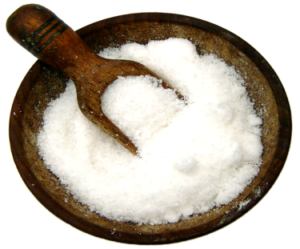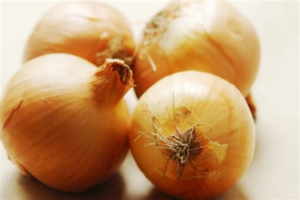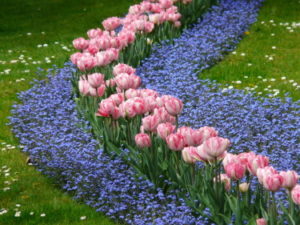Mustard is the All-rounder spice of all times:
Mostarde as per the old French, Mustarde as per the Middle English and Mustard as per the standard English; Call it whatever you want. Mustard remains to be the most widely consumed condiment throughout all the continents.
The source responsible for yielding this mystic and world-ruling condiment happens to be the plants belonging to the Brassica family of the kingdom Plantae. The Brassica family embraces enough of the mustard plant species that the common name of Brassicaceae family is none other than Mustard family.
The Brassicaceae family, or more typically the mustard family, includes a wide variety of mustard plant species. Along with others, mustard green is also included in the same family. Though the mustard plants now belong to the family named Brassicaceae in former times, the name of Brassicaceae was used to be Cruciferae family.
Cruciferous vegetables need no overture, all your favorite greens like cabbage, cauliflower, kale, broccoli, collards, Brussels sprouts, arugula and bok belong to this diverse group of the plant family. Some green veggies and herbs are named as mustard’s after this family, although they are not precisely mustard greens.
Well, which plants are mustard greens and which are not, is a long debate. Nevertheless, the scientific names and classifications of the mustard greens can specify the actual mustard plant species.
Common types of Mustard plants and their botanical (scientific) names:
Listing all the species of plants belonging to this massively wide family would be a daunting task. And as a matter of fact, it isn’t our concern here. Because the most common types of mustard’s are the ones that are observed being used all over the world. These common types and their descriptions are put in writing down here:
Sinapis alba: Having its origin in the Mediterranean region, this species is the most occurring type of mustard plant. You would have heard of the white or yellow mustard being used in sauces, salad dressings, mayonnaise, and other culinary items. This white mustard comes under the biological label of Sinapis alba or sometimes also referred to as Brassica alba or b. Hirta.
Yellow mustard spreads its roots from Europe to the middle east, America, and central Asia too. Seeds are the most demanded part of the plant and are used as condiments after grinding, crushing, powdering, or mixing with other spices. Although, other parts like leaves and flowers are also seen to be consumed for eating and other purposes.
Brassica juncea: The common names of this species would pretty much tell the origin and occurrence of this mustard plant. Brassica juncea is known more commonly as Indian mustard, Chinese mustard or brown mustard. This species is cultivated in the Indian, African, Pakistani, and Chinese, or we can say Asian countries.
Brown mustard’s other biological names can be found as B. Rapa or B. Napus, providing the world’s supply of Canola oil. Brown mustard’s are much more potent than the yellow mustard, and it’s a taste is a lot spicier than the yellow mustard. It’s subtly spicy taste makes it the perfect choice for many fast food dressings, especially the famous hot dogs.
Brassica nigra: Brassica nigra is the variety of mustard plant that bears the prestigious black seeds that are a significant source of food, culinary, oil, and many other industries. First known to be grown in the Mediterranean region, the black mustard spread throughout Europe in no time.
And it has been millennium that this spice is one of the significant parts of the food industry. You would find the black mustard in almost every Asian or European pantry. And not just the seeds, the leaves of brown mustard’s are also pickled with vinegar or dipped in oil and used for various culinary purposes.
Being the most essential and widely used spice, mustard greens cultivation is a widespread practice among gardeners. And to your interest, growing mustard green is such an effortless and simple task to do. Mustard green will add a spicy twist to your garden, and the multi-purposes of the spice will help you to be a pro in the kitchen.
Mentioned below are the steps, tips, and tricks of growing mustard greens in your garden.
An easy guide to growing mustard greens from seeds and seedlings in your garden:
For mustard’s green cultivation, you are free to choose from any of the two ways, either from seeds or seedlings. Both seeds and seedlings will end up providing a good yield of your herbs. But opting seeds has an additional advantage over seedlings, i.e., growing mustard green from seeds is way easier than the seedling method. We have jotted down the steps that should be taken into account while planning on planting mustard greens.
First of all, the season of harvest is the most crucial aspect to look for. Mustard plants tend to grow at the fullest in the spring, so planting the seeds in mid-summer would be the best option.
The seeds should be planted deep into the soil, and at almost half-inch distance should be maintained to avoid overlapping of the sprouts.
In the case of seedlings, the distance should be 4-5 inches.
Sunlight requirements of mustard plants are quite high, provide your mustard greens with a surplus amount of sunlight to ensure proper growth. However, you wouldn’t want to burn your harvest, so check the temperature and keep the environment cool for a thriving mustard yield.
Any regular vegetable fertilizer would work for your mustard greens, just make sure it has the right percentages of all the essential nutrients like potassium, nitrogen phosphorus and other trace elements.
Water requirements for mustard green plants are nearly 2 inches per week.
All these conditions ensure a favorable yield of mustard greens. And gardeners should follow these steps for a healthy mustard plant reap.
The prevalence of mustard as a spice and herb in food and medicinal areas is undoubtedly remarkable. But one unusual practice involving mustard plants is its use as a cover crop.
Growing mustard greens as a cover crop:
Mustard’s prove to be an excellent cover crop to increase soil fertility and controlling pests’ infestation. The key element in mustard plants that works as biofumigant is glucosinolate. This component, when released into the soil, helps in reducing the chances of pests and disease outburst.
The process is kind of a technical one; when your plant deteriorates, it releases glucosinolates. These glucosinolates combine with myrosinase, with water being the catalyst. This, while reaction ends up producing ITC (isothiocyanate) gas. This ITC is the main culprit in the destruction of pathogens that the will is prone to, i.e., verticillium, pythium, fusarium and actinomyces.
Besides biofumigation, mustard cover crops increase the organic matter into the soil due to the high level of nutrients. Other pros of growing mustard greens as a cover crop can be:
Weed control
Herbicide effect
Vermicidal properties
Biofumigant action
Ryegrass prevention
Problematic cover crop suppression
So far, we have emphasized so much on the plant, being extensively used over the globe that you would be eager to know the detailed uses of the mustard plant. Keep reading to learn all the medicinal, health, beauty, and miscellaneous applications of mustard plants.
Wields of mustard plants in numerous ways:
You are pretty much aware of the uses of mustard as a spice in food. But to your amazement, this popular herb does a lot more than just savoring your dishes.
Mustard Plant Health benefits:
Thanks to the phytochemicals in it, mustard seeds have the magical power to combat cancer cells.
Selenium and magnesium in mustard relieve arthritis and migraine pain.
Other than migraine, mustard can also soothe muscle and back pain.
Mustard seed when taken as steam, soothes congested sinuses and relieves respiratory congestion too.
Mustard can help boost your immune system, preventing you from common cold, cough, and flu.
Mustard is a good source of omega-3 and dietary fiber, keeping your gut healthy and improving your overall metabolism.
Blood Pressure levels have been seen to be controlled by mustard usage; the presence of copper, iron, magnesium, and selenium helps in treating menopausal symptoms.
Beauty benefits of mustard:
Our favorite part of mustard seeds is its mysterious powers to rejuvenate and moisturize the skin.
Mustard seed, along with any of your favorite essential oil works best as a scrub to scour off the dead skin on your face.
Carotene, lutein, and vitamins like A, C., And K provide an anti-aging effect.
Its anti fungal effect is also commendable. With a surplus amount of sulfur, mustard can be used as a base in anti fungal products.
Vitamin A in mustard renders prompt hair growth and thickens the hair.
Omega 3 and omega-six fatty acids in mustard help in strengthening hair and fights hair fall problems.
Miscellaneous benefits:
Mustard can be used as a freshener to remove stinky odors from your pantry or other containers. Boil your container in water containing mustard seeds to give them a refreshing fragrance and feel.






